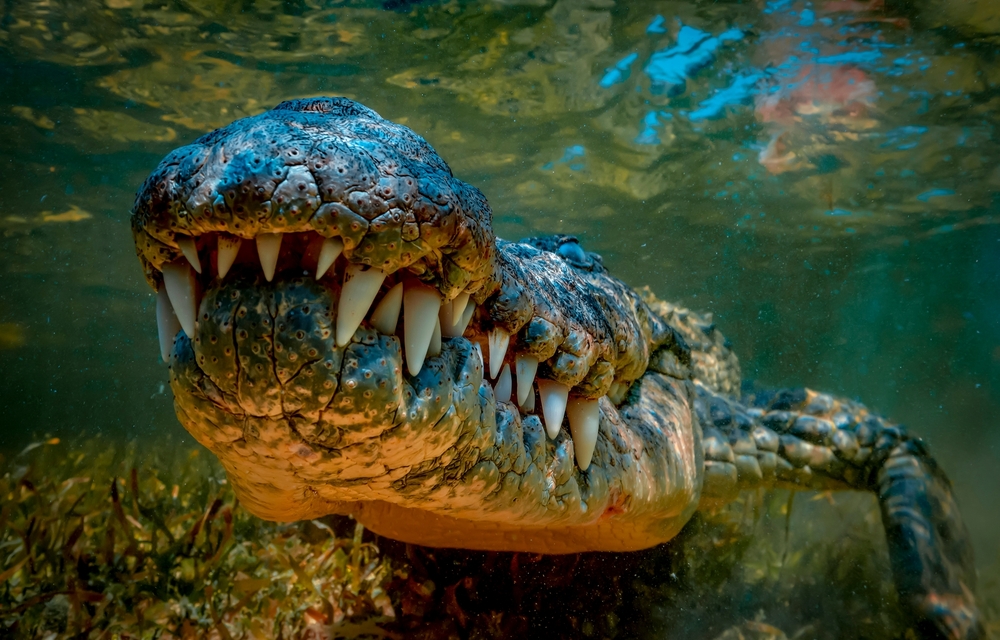A Crocodilian Took a Bite Out of a Pterosaur 76 Million Years Ago
Posted on Categories Discover Magazine

The ability to fly won’t save you from becoming a land predator’s next meal. At least, that’s what one pterosaur may have found out. An international research team recently discovered rare neck vertebrae from a prehistoric flying reptile that was likely bitten by a crocodile-like animal 76 million years ago during the Cretaceous Period. The team published their recent findings in the Journal of Palaeontology.
This rare find could help researchers better understand the predator-prey dynamics of that time and give a better understanding of how crocodilians found their foods.
A Rare Vertebra
During an international field course in 2023, the research team unearthed the neck vertebra of a juvenile pterosaur. The fossil was found in Canada’s Dinosaur Provincial Park, which is located in Alberta — a hot spot for prehistoric discoveries.
According to a press release, the vertebra has a “circular four-millimeter-wide puncture mark from a crocodilian tooth,” and is a rare find.
“Pterosaur bones are very delicate — so finding fossils where another animal has clearly taken a bite is exceptionally uncommon. This specimen being a juvenile makes it even more rare,” said Caleb Brown of the Royal Tyrrell Museum of Palaeontology and lead author of the paper, in a press release.
The team believes it was the vertebra of Cryodrakon boreas, an Azhdarchid pterosaur. This species was only recently identified in 2019 after a research team uncovered remains of a different C. boreas in Dinosaur Provincial Park. The findings indicated that this was one of the largest species of flying reptiles in that area at that time with a wingspan of about 32 feet.
The specimen uncovered in 2023 was only a juvenile and likely had a 6-foot wingspan.
Read More: New Flying Lizard Species Fills in Evolutionary Gap for Pterosaurs
Prehistoric Interaction
To verify if the puncture mark was indeed a bite and not caused during excavation or fossilization, researchers ran the vertebra through micro-CT scans and compared it to other fossilized pterosaur vertebrae.
After confirming that the scans showed a bite mark, the research team could then begin piecing together what life was like in this region during the Cretaceous Period, over 70 million years ago. According to the study, understanding the food chain in a prehistoric ecosystem is a major goal in paleontology.
There is currently little evidence of predators that consumed pterosaurs. This may be because pterosaurs had fragile bones, making it difficult to find well-intact fossilized remains. Flight may have also been an advantage to avoid predation, but again, there isn’t enough evidence to support it. What this find does help researchers understand, is how these two species may have interacted.
“Bite traces help to document species interactions from this period. We can’t say if the pterosaur was alive or dead when it was bitten, but the specimen shows that crocodilians occasionally preyed on, or scavenged, juvenile pterosaurs in prehistoric Alberta over 70 million years ago,” said Brian Pickles from the University of Reading and co-author of the paper, in the press release.
This is the first evidence of prehistoric crocodilians in North America as opportunistic feeders, especially on giant pterosaurs. Other crocodilian bite marks have been found on pterosaur fossils in other countries, such as Romania.
Article Sources
Our writers at Discovermagazine.com use peer-reviewed studies and high-quality sources for our articles, and our editors review for scientific accuracy and editorial standards. Review the sources used below for this article:
A graduate of UW-Whitewater, Monica Cull wrote for several organizations, including one that focused on bees and the natural world, before coming to Discover Magazine. Her current work also appears on her travel blog and Common State Magazine. Her love of science came from watching PBS shows as a kid with her mom and spending too much time binging Doctor Who.